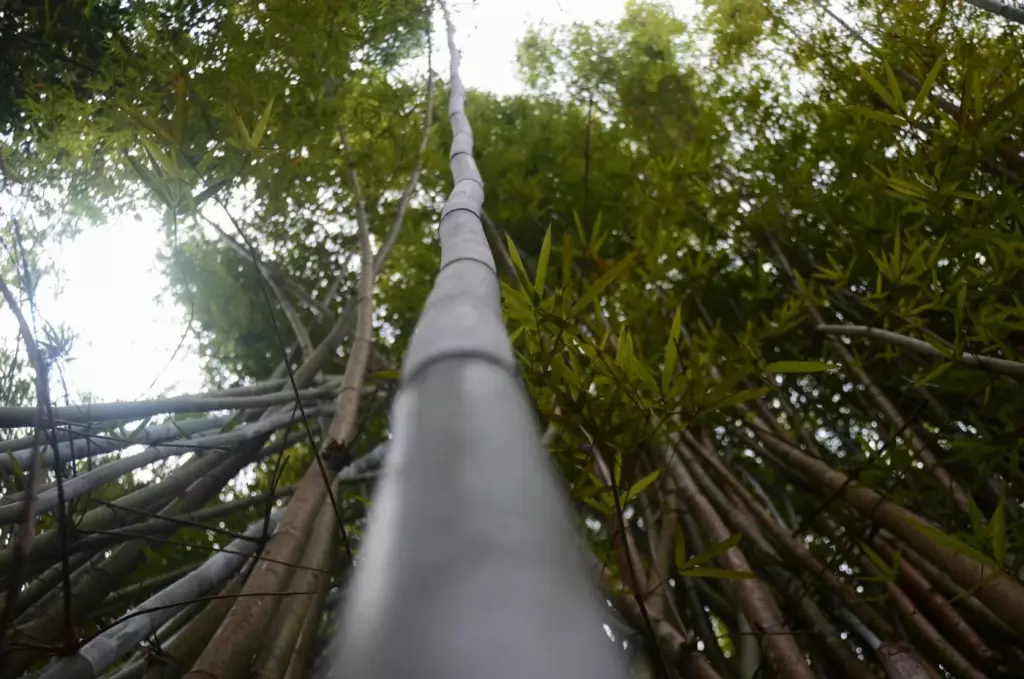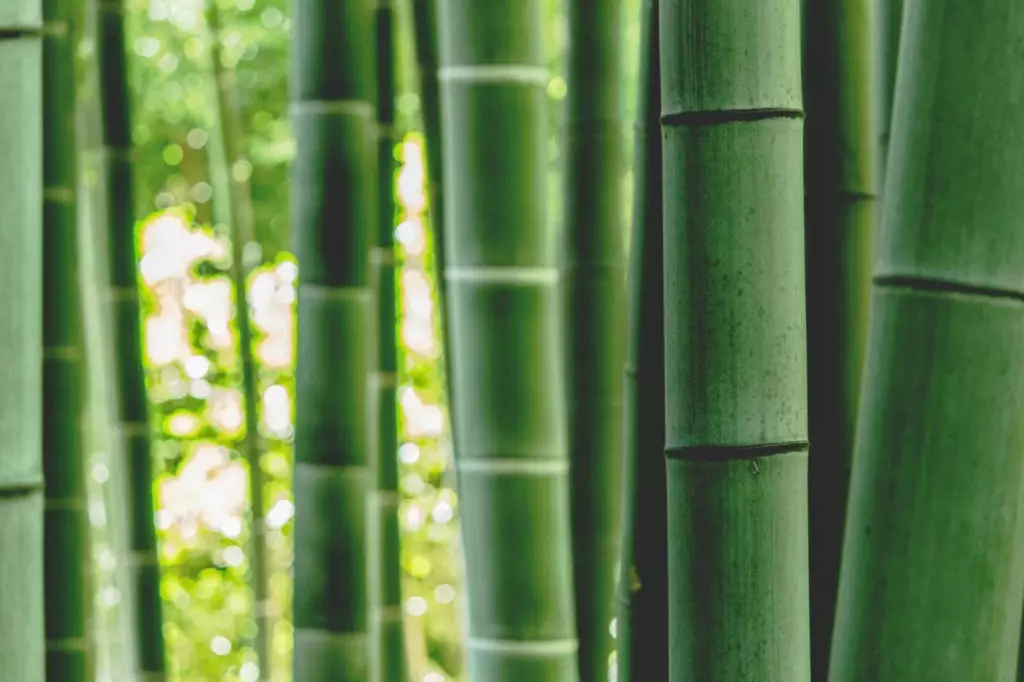9 Best Bamboo Farming Techniques for Maximum Yield
Bamboo farming, with over 1,500 species cultivated worldwide, offers significant economic and ecological benefits. In this article, we'll give you 9 best techniques for bamboo farming that are designed to optimize yield, focusing on strategies that enhance growth and sustainability.
For maximum yield in bamboo farming, first, select species suited to the local climate and prepare the soil with proper pH balance and organic fertilizers. Implement regular irrigation and space plants appropriately. Employ pest management, and practice thinning and harvesting to encourage regeneration.
Choosing the right bamboo for your farm—clumping or running—could be the game-changer in your agricultural playbook. It's not just about the yield; it's about matching your farming goals to the bamboo's growth habits. Let's dive deeper into the bamboo jungle and uncover the secrets to maximizing your green gold.
Summary
- Selecting high-quality seeds or saplings that are suited to local climatic conditions can significantly improve the adaptability and growth potential of bamboo.
- Proper soil with good drainage and the application of organic fertilizers tailored to the bamboo's needs are crucial for healthy plant growth and yield.
- An efficient irrigation system and appropriate spacing reduce competition for resources and ensure sufficient hydration, supporting optimal growth.
- Regular pruning, effective pest and disease management, and harvesting at the right time are essential practices for enhancing the quality and yield of bamboo crops.

On this page:
- Best Bamboo Farming Techniques for Maximum Yield
- Select High-Quality Seeds or Saplings
- Use Proper Soil With Good Drainage
- Implement An Efficient Irrigation System
- Take Note of Proper Planting and Spacing
- Apply Organic Fertilizers Appropriately
- Implement Pest and Disease Management
- Prune Regularly To Encourage Growth
- Practice Mulching To Retain Soil Moisture
- Harvest at the Right Time for the Best Quality
- Practical Advice for Bamboo Farmers
Best Bamboo Farming Techniques for Maximum Yield
| Technique | How It Helps Maximize Yield |
|---|---|
| Select high-quality seeds or saplings | Increases growth potential |
| Use proper soil with good drainage | Improves plant health |
| Implement an efficient irrigation system | Ensures sufficient hydration |
| Ensure optimal spacing between plants | Reduces resource competition |
| Apply organic fertilizers appropriately | Provides essential nutrients |
| Prune regularly to encourage growth | Stimulates new shoot growth |
| Implement pest and disease management | Prevents losses |
| Practice mulching to retain soil moisture | Maintains soil moisture |
| Harvest at the right time for best quality | Enhances product quality |
Select High-Quality Seeds or Saplings

To start your bamboo farming venture on the right foot, ensure you select high-quality seeds or saplings.
These should be well-suited to your location's climatic conditions, and choosing native varieties from regions with similar climates, such as Asia, India, or China, can lead to better adaptability and growth.
-
Climate: Bamboo requires a climate that can accommodate its growth cycle, typically found in parts of Asia. A temperate or tropical climate with a well-patterned rainy season will support various bamboo species.
-
Soil conditions:
- Fertility: Bamboo thrives in fertile, well-drained soil.
- pH Level: Aim for a soil pH of 6.0 to 7.0, which is ideal for most bamboo types.
- Soil type: Loamy to sandy loam soils are preferable.
- Preparation: Proper land preparation, such as clearing and amending the soil, is necessary before planting.
When considering the size and location of your site, remember that adequate space is important. One way to improve bamboo cultivation is to understand the biology of your bamboo species.
For example, running varieties of bamboo need a site with adequate spacing as they can spread extensively if not managed correctly.
Your climate's unique conditions, including minimum and maximum temperatures, will dictate the varieties that will perform best.
For instance, bamboo species native to China or India are often well-suited to similar climatic conditions found in other parts of Asia.
Keep these localized weather patterns and soil characteristics in mind as they are critical to the success of your bamboo crops.
Use Proper Soil With Good Drainage
Bamboo thrives in soil that offers good drainage, so waterlogging doesn't become a threat to the health of the plants.
Whether you're looking to cultivate clumping bamboo or the more invasive running bamboo, such as Moso bamboo or Bambusa balcooa, ensure that the soil drains well yet retains enough moisture to meet the plant's needs.
Implement An Efficient Irrigation System
An efficient irrigation system is crucial, especially since bamboo can be a water-loving plant. Running bamboo, with its spreading habit, might require a more extensive irrigation plan compared to clumping types.
During the initial stages post-planting, regular and ample watering helps establish the rhizomes. Overhead irrigation can be beneficial, but ensure it's done in a manner that doesn't promote stagnation around the base of your bamboos.
Take Note of Proper Planting and Spacing
Proper spacing is crucial for the healthy growth of bamboo. When planting, consider the mature size of the bamboo species you are cultivating.
The typical planting matrix might be in rows spaced about 5 meters apart with 4 meters between plants, allowing for optimal growth and easy maintenance.
For propagation, different methods like using nursery-raised seedlings, cuttings, or tissue culture can be utilized. You can refer to this article for spacing guidelines for bamboo.
| Bamboo Type | Propagation Method |
|---|---|
| Clumping bamboo | Propagated from divisions |
| Running bamboo | Rhizome cuttings |
| Moso bamboo | Seed or tissue culture |
Ensure you're using healthy planting materials as this will impact the overall yield and health of your bamboo crop.

Apply Organic Fertilizers Appropriately
A balanced addition of fertilizers, such as compost and other organic matter, increases the soil's nutrient content. Bamboo requires soil rich in potassium and nitrogen for optimal growth. It also helps enhance bamboo biomass yield.
Using organic fertilizers is also fundamental to the sustainability of bamboo farming. They enrich the soil with nutrients and enhance the biological activity within the soil, promoting healthy bamboo growth.
Be sure to:
- Assess the soil's nutrient levels through testing before application to tailor the amount of fertilizer to the bamboo's specific needs.
- Introduce biochar to the soil, a form of organic matter that improves fertility, retains moisture and contributes to carbon sequestration.
Implement Pest and Disease Management
Maintain a schedule for applying pesticides to tackle pests that can damage your bamboo crops.
However, utilize these chemicals responsibly to prevent harming the ecosystem.
In conjunction with pesticides, regular weed control protects your bamboo from competing for nutrients and water, ensuring it receives all the resources needed to grow.
- Methods: Mulching, Manual Weeding, Responsible Pesticide Use
- Frequency: Assess monthly; More often during growing season.
Prune Regularly To Encourage Growth
Pruning and thinning your bamboo is essential for adequate sunlight and air circulation, which will in turn encourage healthy culm production.
Pruning should be done carefully to remove dead or weak culms, and thinning should ensure that there's enough space for the bamboo to grow. Consider doing the following:
- Prune at the base.
- Thin-out clusters, maintaining spacing for light penetration and airflow.
Practice Mulching To Retain Soil Moisture
Mulching is an efficient way to preserve soil moisture, reduce the need for watering, and suppress weed growth. Here's how to do it effectively:
- Spread a layer of organic matter, such as bamboo leaves or grass clippings, around your plants.
- This layer not only keeps the soil cool and moist but also gradually decomposes, adding vital nutrients back to the soil, and enhancing its structure and fertility.
Harvest at the Right Time for the Best Quality
To ensure the best quality of bamboo and optimal yield, you need to harvest at the correct time.
Typically, the ideal time for harvesting timber culms is when they are between 3-5 years old.
Harvesting during this time frame ensures the bamboo has reached a maturity that balances strength and lignin content, making it suitable for furniture and crafts, while preserving the plant's swift regenerative abilities.
Your bamboo culms should be cut close to the ground to encourage new growth. Use a sharp instrument to ensure a clean cut.
This technique helps maintain the health of the bamboo and contributes to sustainable yield. There are sustainable bamboo harvesting techniques that focus on selective cutting to avoid over-harvesting and protect the biomass.
Once harvested, the bamboo should be treated to prevent decay and pest infestation. Proper drying and treatment with preservatives can significantly increase the durability of the bamboo poles.
Practical Advice for Bamboo Farmers
When you're considering bamboo farming as a lucrative venture, understanding the end use of your crop is paramount for aligning your strategies with market demand.
Consider the capital and size
Starting a bamboo nursery requires initial capital, but it's a wise investment due to bamboo's growth rate and demand.
Consider the size of your operation. Small plots can focus on ornamental varieties catering to landscaping demand. Meanwhile, larger farms may cultivate timber bamboo for construction.
A more detailed cost breakdown of planting bamboo on an acre of land can be found in this article.
Be careful in choosing the bamboo species
Opt for clumping bamboo species like Phyllostachys if you're in the Northeastern states. These are less invasive compared to running bamboo.
In the Southeast, with its favorable climate, your bamboo can thrive phenomenally with proper fertilization and fungicide treatments. If you're aiming to have a profitable bamboo farm, consider these species.

Apply effective marketing strategies
Enhance your profits by:
- Networking with construction companies for timber sales.
- Partnering with nurseries or landscape businesses for ornamental varieties.
- Promoting the health benefits of bamboo shoots as a food source.
By focusing on these practical aspects, you can optimize your bamboo farm's output and profitability.



